.
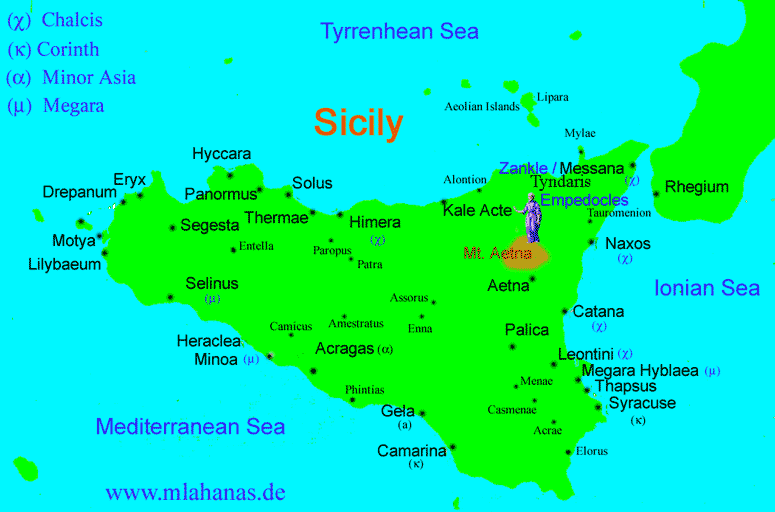
Segesta was the political center of the Elymian people. It is placed in the northwestern part of Sicily, in the province of Trapani and in the vicinity of Alcamo and Gibellina.
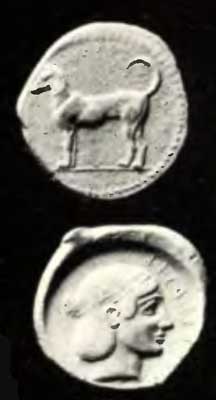
The river god Crimissus (in form of a dog), Head of Segesta
According to the tradition used in Virgil's Aeneid, Segesta was founded jointly by the territorial king Acestes (who was son of the local river Crimisus by a Dardanian woman) and by those of Aeneas' folk who wished to remain behind with Acestes to found the city of Acesta.
The belief that the name of the city was oringally Acesta or Egesta and changed to Segesta by the Roman to avoid its ill-omened meaning in Latin is disproved by coins showing that Segesta was indeed the earlier name.
Segesta (Egesta to the Greeks) was one of the major cities of the Elymian people, one of the three indigenous peoples of Sicily. The other major cities of the Elymian was Eryx and Entella.
The population of Segesta were mixed Elymian and Greek Ionic. The Elymian people in Segesta were soon Hellenized, taking up the Greek way of life.
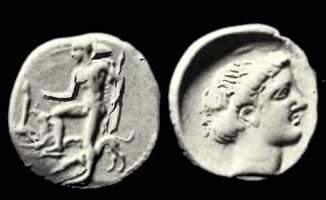
Segesta Tetradrachm 415/409 BC
Segesta was in eternal conflict with Selinunte, which probably tried to assure itself a port on the Tyrrhenian Sea. The first clashes were in 580-576 BC, and again in 454 BC, but later the conflict would have repercussions for all of Sicily.
In 415 BC Segesta asked Athens for help against Selinunte, leading to a disastrous Athenian expedition in Sicily (415-413 BC). Later they asked Carthage for help, leading to the total destruction of the city of Selinunte by the hands of Carthage. Segesta remained an ally of Carthage, it was besieged by Dionysius of Syracuse in 397 BC, and it was destroyed by Agatocles in 307 BC, but recovered.
In 276 BC the city was allied with Pyrrhus, but changed side in 260 BC when it surrendered to the Romans. The city was not punished by the Romans for its long alliance with Carthage, but owing to the mythical common origin of the Romans and the Elymians (both descendants of refugees from Troy) it was granted the state of a "free and immune" city.
In 104 BC the slave rebellion lead by Athenion started in Segesta.
Little is known about the city under Roman rule, but it is probable that the population gradually moved to the port city of Castellammare del Golfo due to the better trading opportunities.
The city was finally destroyed by the Vandals. It was never resettled.
The ruins of the city are located on the top of Monte Bàrbaro at 305m above the sea. The city was protected by steep slopes on several sides and by walls on the more gentle slope towards the temple.
From the hilltop there is a splendid view over the valley towards the Gulf of Castellamare. The city controlled several major roads between the coast to the north and the hinterland.
Very little is known about the city plan. Aerial photography indicate a regular city plan, built in part on terraces to overcome the natural sloping terrain. The current remains might be from the reconstruction after the destruction of the city by Agathocles.
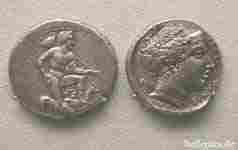
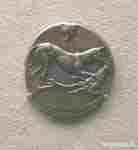
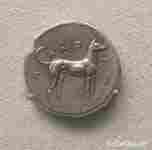
Segesta, Tetradrachma, Segesta, Didrachma, Segesta, Didrachma,
The Temple
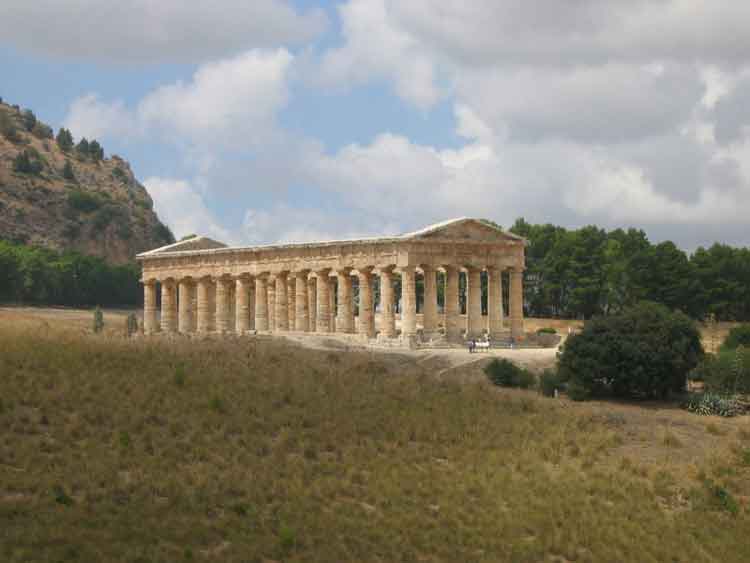
Archaic Doric temple at Segesta
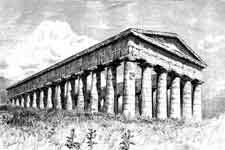
Segesta Temple, 1894 engraving
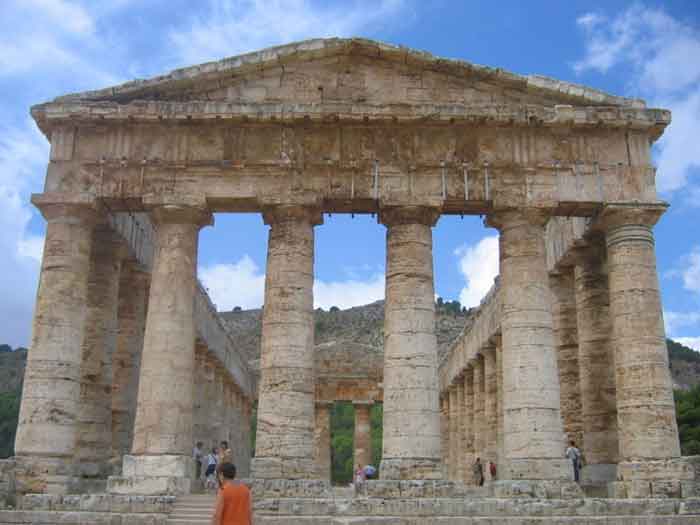
Segesta Temple (Source)
The unfinished hexastyle doric temple of Segesta, (late 5th century BC) is built on a hilltop just outside the ancient city of Segesta with a commanding view of the surrounding area. It is one of the best-preserved Greek temples, partly because of its isolation— there was never any temptation to dilapidate it for local building materials— and never desecrated because it had never been completed. It would be a peripteral temple if it had ever had an enclosed cella within it. But it was never roofed over, and its columns stand in the rough, waiting to be fluted.
It was built by the Elymian people, probably around 430-420 BC, but it was never completed.
It is a Doric temple, peripteral with 6×14 columns on a base measuring 21×56m and three steps high. The structure of the temple is intact with entablature and tympanums in place, but it was clearly never finished. The columns are unfluted, the tabs used for lifting the blocks are still present on the base, and there are no traces of a cella or a roof.
The temple of Segesta is by construction, style and size a standard product for the late 5th century BC, but its unfinished state and its remarkable, almost perfect, state of conservation makes it one of the most important surviving Hellenic temples in the world.
The Theater
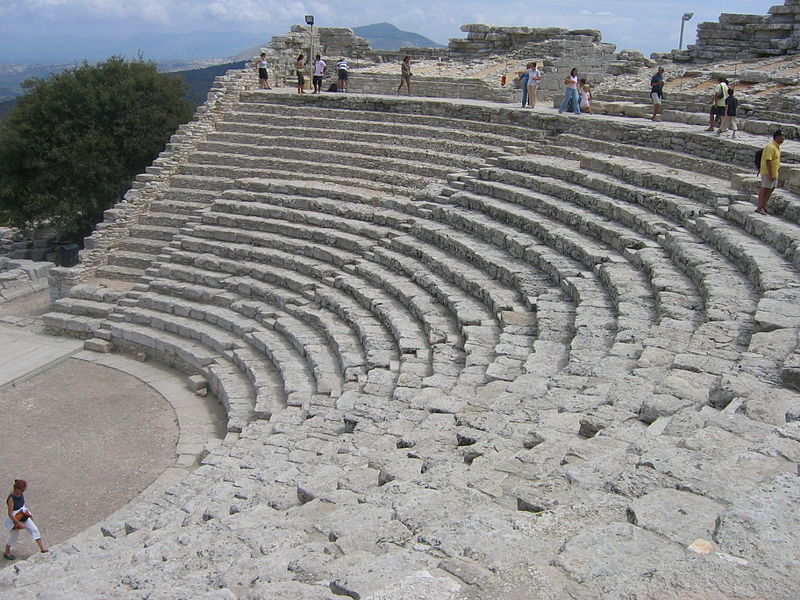
Theater in Segesta max. capacity 3000 visitors [Source]
The theater is in a beautiful place, in the top of a mountain. From the Theater could be viewed an amazing panorama in the north. The Theater was created in the 3rd century BC.
Links
Many photos mostly of the temple (http://sights.seindal.dk/sight/46.html)
Segesta (http://www.bestofsicily.com/segesta.htm)
| Ancient Greece
Science, Technology , Medicine , Warfare, , Biographies , Life , Cities/Places/Maps , Arts , Literature , Philosophy ,Olympics, Mythology , History , Images Medieval Greece / Byzantine Empire Science, Technology, Arts, , Warfare , Literature, Biographies, Icons, History Modern Greece Cities, Islands, Regions, Fauna/Flora ,Biographies , History , Warfare, Science/Technology, Literature, Music , Arts , Film/Actors , Sport , Fashion --- |
Retrieved from "http://en.wikipedia.org/"
All text is available under the terms of the GNU Free Documentation License


